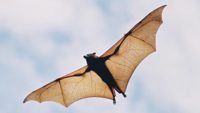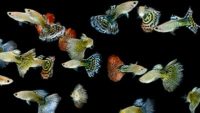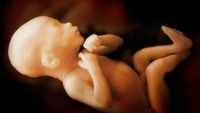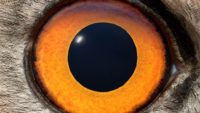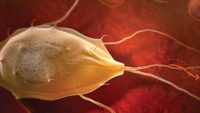How could dinosaur proteins persist over 70 million years inside dinosaur bones? That’s one of the biggest questions that secular paleontologists have faced in the last two decades. Many of them reason that some unique but undiscovered set of conditions grant proteins power to defy all odds and somehow survive unimaginable time scales. They think someone, someday, will discover the protein’s secret to survival. A new model sugge… More… …read more Source: icr.org
By Ken Ham Which evolved first—moth ears or bat echolocation? Well, the “textbook” evolutionary story is that bats evolved the ability to make ultrasonic calls, which they used to hunt for moths. And then moths supposedly evolved (several times, apparently) the ability to hear these calls and better evade the hunting mammals. Now, that story has been taught as fact for years. But apparently, a new study says this whole story is backwards! Based on this new study (it assumed evolutionary ideas and relationships in the first place), which was described as a “bit of a bombshell,” evolutionary scientists claim [More]
Genetic engineering is no longer in the realm of science fiction. We review a Netflix series called Unnatural Selection and discuss the implications of the CRISPR-Cas9 technology. …read more Source: creation.com
For more than a century, biologists have appealed to Darwinian natural selection to explain how living organisms adapt to different environments. But research over the last several decades has consistently dethroned Darwin’s view of natural selection. Rather than corroborating the concept that environments mold creatures through “survival of the fittest,” the research supports the astonishing idea that to a great extent creature… More… …read more Source: icr.org
A team has come up with an interesting universal addressing system. But did you know living things have a solution to their own ‘address problem’? …read more Source: creation.com
The ability to distinguish the style of a Picasso from a Monet puts a whole new perspective on ‘bird-brainy’ …read more Source: creation.com
New research goes a long way in explaining how creatures actively sense their environment and adapt to it. One mechanism enables some organisms to track the changing levels of nutrients, hormones, or stress they are exposed to, and then make appropriate responses if and when needed. Andrew Capaldi’s lab at the University of Arizona is responsible for these remarkable findings published in Nature Communications.1 Hi… More… …read more Source: icr.org
By Dr. Tommy Mitchell The story of the peppered moth has been set forth for decades as the prime example of evolution in action. But, are they really evidence of evolution? …read more Source: AIG Daily
Many people of European descent have less melanin in their eyes, and it’s got nothing to do with evolution …read more Source: creation.com
Evolutionary scientists are continually searching for evidence of the “first life” on Earth. Their most recent claim involves well-preserved stromatolite fossils from Australia. Stromatolites are finely laminated biomats formed by colonial cyanobacteria—a complex type of photosynthetic bacteria. Fossil stromatolites are found in mounded structures similar to modern stromatolites. The fossils aren’t composed of the ba… More… …read more Source: icr.org
By Harry F. Sanders, III Because of their isolated natural habitats, guppy populations have been used to study the processes of “evolution” in the wild. …read more Source: AIG Daily
New findings continue to support ICR’s theoretical assumption that biological functions are best explained by engineering principles.1 These findings challenge long-held Darwinian assumptions that the environment is responsible for “selecting” creatures, causing them to adapt. Rather, creatures appear designed from the start to sense their environment and adapt accordingly. The latest research comes from the lab… More… …read more Source: icr.org
A recent study making the news involves the reconstruction of the facial features and anatomy of the enigmatic humans known as the Denisovan from genetic data.1 In the evolutionist’s own words who did the study, “Denisovans are an extinct group of humans.” And the scientists’ research shows exactly that. Denisovan fossils are represented by only a few teeth, a finger bone, a bit of a mandi… More… …read more Source: icr.org
An insurmountable impediment to evolution. …read more Source: creation.com
By Ken Ham You may have seen headlines recently with phrases like “lizard-men evolution,” “leftovers from our lizard evolution,” or even “human embryos go through lizard stage.” These headlines were reporting on a study that claims that human embryos (babies in the early stages of development) supposedly have muscles not found in adult humans, but are found in lizards. Therefore, these evolutionists believe this is a throwback to 250 million years ago when we shared a common ancestor with lizards. But what does a world-class anatomist who specialized in embryology have to say about this research? Well, he summed …read [More]
By Prof. Stuart Burgess Don’t look now, but you’re being watched by an amazing variety of magnificent eyes. …read more Source: AIG Daily
By Harry F. Sanders, III Since plants are unable to simply get up and walk, or even shout when in danger, we often think of plants as passive. …read more Source: AIG Daily
Do evolutionists really say that the bones, joints, muscles, nerves and eardrum really turn into the middle ear of mammals? Unheard of! …read more Source: creation.com
When and how did dogs diversify after Noah’s Flood? …read more Source: creation.com
By Troy Lacey Human vision is incredible. The human eye and brain are adept at recognizing objects, even when they are not fully visible or oriented at different angles. …read more Source: AIG Daily
Powered by ocean wind shear, the dynamic soaring of the albatross enables it to fly for thousands of miles just above the sea surface without flapping its wings. …read more Source: creation.com
New human organs are rarely discovered, but that’s what several astute scientists recently accomplished at Sweden’s Karolinska Institutet’s Department of Medical Biochemistry and Biophysics.1 The organ is a loosely connected mesh of cells in the skin’s nervous system that are sensitive to painful conditions straining the skin. This research also demonstrates fundamental design principles of biological sensors.More… …read more Source: icr.org
A tiny caterpillar can make a meal out of an unsuspecting insect in the blink of an eye. …read more Source: creation.com
By Dr. Jean Lightner Want to race? It’s easy to see why white-tailed deer have become winners in the Americas. …read more Source: AIG Daily
Two recent reports undermine natural selection, but support design. The reports reinforce the reality that creatures are active, problem-solving beings that sense environmental changes and produce targeted adaptive responses. Another new insight is that an organism’s offspring could produce the same targeted response. However, the adaptive traits aren’t due to changes in DNA per se. Rather, the expression of the genes are modified dur… More… …read more Source: icr.org
By Ken Ham A rather lengthy article appeared recently in The Scientist regarding Neanderthal DNA and its appearance in our own genome. Contrary to what evolutionists expected, Neanderthals and what they call modern humans had children together. Since this was an unexpected (in their view) discovery, researchers have been digging to see what marks Neanderthals left in our DNA. And they’ve found that those marks may influence (in some people of certain descent) skin shade, immunity, susceptibility to depression, and even whether someone is a night owl or a morning person. What does this tell us from a creationist …read [More]
By Dr. Georgia Purdom What if we could design a super-small, versatile machine that could travel up blood vessels to deliver targeted medical aid? …read more Source: AIG Daily


















